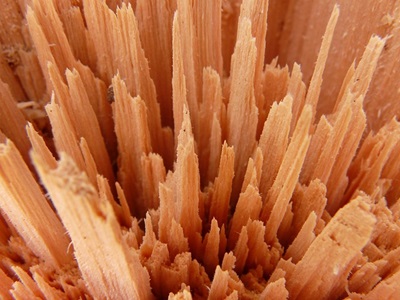
Man-Made Fibres
Exploring Man-Made Fibres: A Comprehensive Guide
Man-made fibres, distinct from synthetic fibres, are derived from natural sources, typically plants, and undergo extensive processing to be transformed into usable textiles. This guide delves into their origins, processing methods, properties, benefits, drawbacks, and environmental impact.
Origins of Man-Made Fibres
Man-made fibres are created from naturally occurring polymers found in cellulose, which is extracted from plant sources such as wood pulp, bamboo, and cotton linters. Key types include:
Rayon (Viscose): Made from wood pulp treated with chemicals to create a fibre that mimics the properties of silk.
Lyocell: Derived from wood pulp but uses a more environmentally friendly solvent in its processing.
Modal: A type of rayon made from beech tree pulp, known for its softness and high absorbency.
Cupro: Created from cotton linter (the short fibres near the seeds), processed to produce a silky fibre.
Processing into Usable Textiles
- Cellulose Extraction: The cellulose is extracted from plant sources and purified.
- Dissolution: The cellulose is dissolved in a chemical solution to form a viscous liquid.
- Spinning: The viscous liquid is extruded through a spinneret to form long fibres.
- Regeneration: The extruded fibres are solidified by coagulation in a chemical bath, regenerating the cellulose structure.
- Washing and Bleaching: The fibres are washed and often bleached to remove impurities.
- Cutting and Finishing: The fibres are cut to the desired length and treated to enhance properties such as dye affinity and softness.
Properties of Man-Made Fibres
Softness: Often softer than many natural fibres.
Absorbency: High moisture absorption, making them comfortable to wear.
Breathability: Good air permeability, enhancing comfort.
Drape: Excellent drapability, providing a smooth, flowing appearance.
Versatility: Can be engineered to mimic the properties of various natural fibres.
Pros of Man-Made Fibres
Versatility in Textures: Can be made to resemble silk, cotton, wool, and other natural fibres.
Enhanced Performance: Improved qualities such as increased strength, durability, and softness.
Cost-Effective: Often cheaper to produce than some natural fibres.
Consistent Quality: More uniform in quality compared to natural fibres.
Cons of Man-Made Fibres
Chemical Processing: Involves the use of chemicals, which can be harmful to the environment if not managed properly.
Less Natural Feel: Some man-made fibres may not have the same tactile qualities as their natural counterparts.
Environmental Concerns: The production process can be resource-intensive and polluting.
Environmental Impact
Manufacturing Process
Resource Use: Uses natural raw materials, but the chemical processing can offset some environmental benefits.
Energy Consumption: Energy-intensive processes, though typically less than fully synthetic fibre production.
Chemical Pollution: Potential release of harmful chemicals during processing, though advancements like closed-loop systems in lyocell production mitigate this.
Disposal
Biodegradability: Generally more biodegradable than synthetic fibres but still dependent on specific fibre type and processing.
Recycling Challenges: Limited recycling options due to the chemical treatments and mixed fibre compositions.
Sustainable Alternatives and Practices
Closed-Loop Systems: Technologies that recycle water and solvents in the production process, reducing environmental impact.
Eco-Friendly Fibres: Development of fibres like lyocell, which use less harmful chemicals and more sustainable processes.
Sustainable Sourcing: Ensuring the raw materials are sourced from responsibly managed forests and plantations.
Consumer Awareness: Promoting sustainable fashion choices and proper disposal methods.
Conclusion
Man-made fibres offer a blend of natural origins and engineered performance, providing a versatile and cost-effective alternative to purely natural and synthetic fibres. While they bring numerous benefits to the textile industry, their environmental impact warrants careful consideration and ongoing efforts towards more sustainable production and disposal practices. By understanding and addressing these impacts, we can make more informed choices that benefit both our wardrobes and the planet.
Further reading: Natural fibres










One reply on “Man-Made Fibres”
[…] For information on the fibre types i.e. the raw materials that fabrics are made from, read my blogs on natural, synthetic and man-made fibres. […]